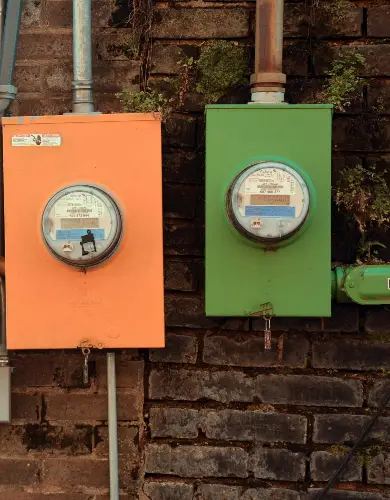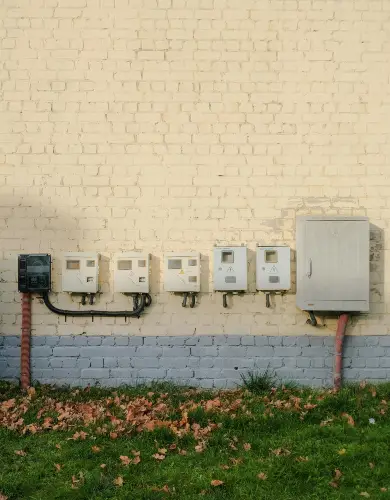Nuclear power in the UK
Nuclear power stations generate approximately 15% of the electricity in the UK, but this contribution has gradually declined over the last twenty years.
Despite this decline, nuclear power still provides reliable and consistent baseload power, which is increasingly vital to balance the inconsistent power generation from UK wind farms.
This article explains the state of the UK’s eight nuclear power plants, current plans to build more, and the vital role nuclear power plays on the national grid. We cover:
- The UK’s aging nuclear power stations
- UK nuclear plants under construction
- Plans for UK nuclear power
- Who owns the nuclear power stations in the UK?
- The role of nuclear energy on the national grid
- The impact of UK nuclear on electricity prices
What is the current state of nuclear energy in the UK?
The majority of the UK’s current nuclear capacity is due to be decommissioned in the next decade.
To replace this lost capacity, the future of nuclear energy is relying on two new sites: Hinkley Point C, which is under construction, and Sizewell C, which is in the final stages of planning.
In this section, we’ll provide an overview of the UK nuclear industry.
The UK’s ageing nuclear power stations
The table below shows the eight active nuclear power plants in the UK.
Three of these have already stopped generating electricity and are in the process of being decommissioned.
The remaining five power plants generate approximately 15% of the UK’s electricity, but four of these power stations are expected to cease generating electricity in the next decade.
| Power Station | Location | Capacity (MW) | Operational Since | Expected Closure | Operator |
|---|---|---|---|---|---|
| Sizewell B | Suffolk, England | 1,198 | 1995 | 2035 | EDF Energy |
| Hinkley Point B | Somerset, England | 965 | 1976 | 2022 (Defueling) | EDF Energy |
| Hunterston B | North Ayrshire, Scotland | 965 | 1976 | 2021 (Defueling) | EDF Energy |
| Heysham 1 | Lancashire, England | 1,155 | 1983 | 2027 | EDF Energy |
| Heysham 2 | Lancashire, England | 1,230 | 1988 | 2030 | EDF Energy |
| Hartlepool | County Durham, England | 1,180 | 1983 | 2027 | EDF Energy |
| Dungeness B | Kent, England | 1,090 | 1983 | 2021 (Defueling) | EDF Energy |
| Torness | East Lothian, Scotland | 1,190 | 1988 | 2030 | EDF Energy |
Source: Office for Nuclear Regulation – Independent nuclear regulator
UK nuclear plants under construction
Hinkley Point C is the only nuclear plant currently under construction in the UK.
Business energy supplier EDF is building two nuclear reactors on the existing nuclear site in Hinkley, Somerset.
Hinkley Point C is expected to have a capacity of 3,200 megawatts, enough to power 6 million homes or about 7% of the UK’s overall power generation.
Construction began in 2017 and is expected to be completed by 2031.
Plans for UK nuclear power
EDF Business Energy is planning another power plant using the same design as Hinkley Point, with a similar generation capacity, at Sizewell on the Suffolk coast.
Sizewell C is the only planned nuclear power plant to have received government approval and continues to be supported by the new Labour government. Sizewell C is in its final preparation stages before construction can begin. For more details, visit our full guide to Sizewell C.
In 2025, the UK government has committed a £2.5 billion investment with Rolls Royce to develop small modular nuclear reactors.
Who owns the nuclear power stations in the UK?
Électricité de France (EDF) owns and operates all of the UK’s current nuclear power plants and the planned sites at Hinkley and Sizewell.
EDF is a global leader in nuclear power, with the largest fleet of nuclear reactors, including all 18 of France’s active reactors.
EDF has effectively controlled the entire UK nuclear sector since 2009, when it purchased British Energy following privatisation. British Energy owned most of the UK’s nuclear power plants at the time.
The role of nuclear energy on the national grid
Nuclear energy forms an essential part of the UK’s strategy to decarbonise the electricity grid, providing vital carbon-neutral baseload electricity.
In this section, we’ll cover the four key roles of nuclear power on the UK electricity grid.
Low-carbon electricity generation
Nuclear power technology produces electricity with minimal carbon emissions from operation.
The plume of smoke typically seen rising from a nuclear power station is simply water vapour escaping from the cooling towers. Find out more in our guide to low carbon energy sources.
💡 Nuclear is a non-renewable electricity generation, as it relies on finite uranium resources.
Baseload generation
Nuclear power stations generate consistent and predictable quantities of electricity 24/7 but cannot quickly increase or decrease their power output.
Nuclear power plants are used to provide a reliable baseload of power that the wholesale electricity market always needs.
The baseload provided by nuclear power is in sharp contrast to renewable sources of energy like wind or solar, where power output depends on weather conditions and can drop to zero in unfavourable conditions.
Grid stability
Grid stability is the ability of the national grid and regional distribution network operators to maintain a reliable supply of power, ensuring voltage and frequency levels stay within safe operational limits.
In a nuclear power plant, the turbines spin at a regular frequency 24/7, helping to stabilise the frequency of the grid and keep it within a 49.5 Hz to 50.5 Hz operating window. The stable output of nuclear power stations helps to maintain a consistent voltage across the grid.
Energy security
Nuclear power plants help reduce the country’s dependence on importing natural gas to feed its gas-fired power plants.
Since the start of the conflict in Ukraine, natural gas has been scarce in Europe, causing a sharp rise in business gas prices.
The UK doesn’t mine its own uranium but can rely on allies like Canada and Australia to fuel its nuclear power stations.
The impact of UK nuclear on electricity prices
In a typical business energy contract, approximately 15% of the power provided will have been generated by a UK nuclear plant.
Therefore, the cost of nuclear power significantly impacts typical business electricity prices in the UK.
Once nuclear power plants are built, they operate at a low marginal cost, significantly cheaper than gas-fired power plants that rely on a natural gas supply.
However, the main issue with nuclear power plants is the high capital costs required to construct them.
The Hinkley C reactor, currently under construction, is expected to cost £33bn, which will ultimately be paid for by homes and businesses that use the electricity it generates in the future.

